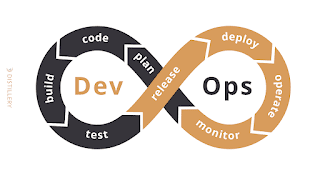DATA ANALYSIS
In today's data-driven world, businesses have access to an overwhelming amount of information. However, without proper analysis, data remains a mere collection of numbers and figures. This is where the power of data analysis comes into play. Data analysis is the process of inspecting, cleaning, transforming, and modeling data to discover meaningful patterns, draw conclusions, and support decision-making.
predictive insights. By analyzing historical data and applying statistical models, businesses can forecast future trends, anticipate customer behavior, and make proactive Data analysis allows businesses to extract valuable insights from their data, enabling them to make informed decisions and drive growth. Here are some key aspects and benefits of data analysis:
2. Predictive Insights: One of the significant advantages of data analysis is its ability to provide decisions.
3. Improved Decision-Making: Data analysis provides a solid foundation for decision-making. By analyzing relevant data, businesses can assess risks, evaluate various scenarios, and make data-driven decisions that have a higher likelihood of success.
4. Identifying Opportunities: Data analysis helps businesses identify hidden opportunities that may have been overlooked. By analyzing data from multiple sources, businesses can uncover patterns, market trends, and customer preferences, enabling them to develop new products, target specific customer segments, or enter new markets.
5. Enhanced Efficiency and Cost Reduction: Data analysis allows businesses to optimize processes and identify areas of inefficiency. By analyzing operational data, businesses can streamline workflows, identify bottlenecks, and implement improvements that lead to increased efficiency and cost savings.
6. Customer Insights and Personalization: Data analysis enables businesses to gain a deeper understanding of their customers. By analyzing customer data, businesses can identify purchasing patterns, preferences, and behaviors, enabling them to personalize marketing campaigns, improve customer experiences, and drive customer loyalty.
7. Competitive Advantage: In today's competitive landscape, data analysis is a key driver of a competitive advantage. By leveraging data analysis techniques, businesses can gain insights into market trends, customer preferences, and competitor strategies, enabling them to stay ahead of the competition and make strategic decisions.
8. Risk Assessment and Mitigation: Data analysis helps businesses assess and mitigate risks. By analyzing historical data and using statistical models, businesses can identify potential risks, evaluate their impact, and develop risk mitigation strategies.
9. Continuous Improvement: Data analysis is not a one-time activity but rather an ongoing process. By continuously analyzing data, businesses can track performance, measure the effectiveness of strategies, and identify areas for improvement, enabling them to refine their operations and stay agile in a rapidly changing business environment.
In conclusion, data analysis is a powerful tool that empowers businesses to extract valuable insights, make informed decisions, and drive growth. By leveraging the right data analysis techniques and tools, businesses can unlock the true potential of their data and gain a competitive edge in their respective industries.





Comments
Post a Comment